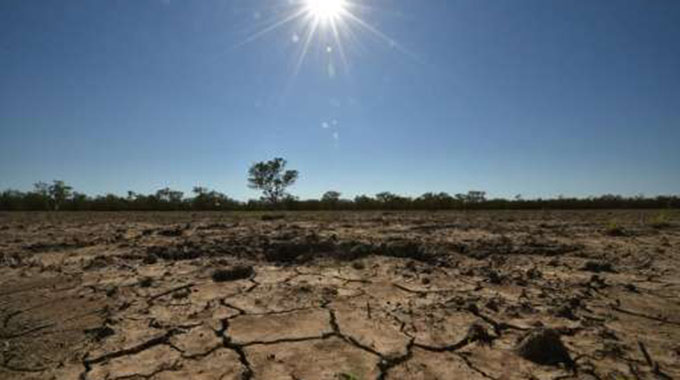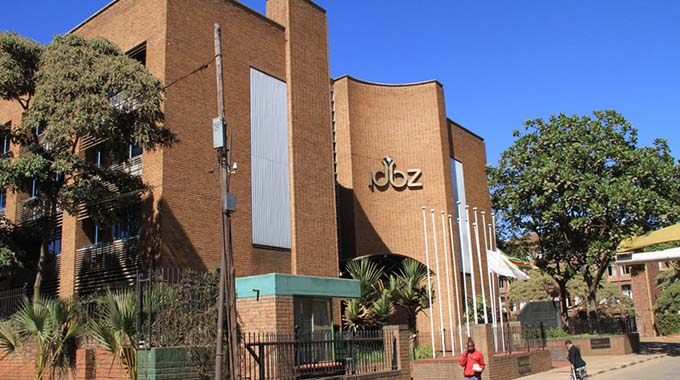Farmers who do things differently will beat El Nino

Climate Jeffrey Gogo
Once again Zimbabwe this year faces the bleak prospect of another El Nino, the second such event in three years. In a country where the periodic phenomenon is slowly becoming the norm, rather than the exception, El Nino — a naturally occurring weather cycle caused by warming waters in the Pacific Ocean — evokes painful memories of shattered lives and livelihoods.
El Nino events alter rainfall patterns worldwide, leaving some areas soaked, but in Zimbabwe they are mostly linked with a severe shortage of rain. For example, the 2015/16 El Nino resulted in Zimbabwe’s worst drought in 25 years, killing more than 19 000 cattle and left 4 million people hungry. The one that hit between 1982 and 1983 resulted in a severe drought, with widespread ramifications on poverty and hunger.
Now, scientists at the Meteorological Services Department (MSD) are more than 60 percent certain that El Nino will occur this year.
And this is not going to be one of those rare years when the weather phenomenon doesn’t yield a drought. The MSD meteorologists predict that there will be little rain in the summer — normal to below normal rainfall, in their parlance.
That’s not exactly something to shout about. Here is why. Rainfall is very important to Zimbabwe. Not only does it define seasons, but about two thirds of the 13 million Zimbabweans are dependent on it, through agriculture, according to the national statistics agency, ZimStats.
In good times, precipitation averages between 400mm and 1 000mm, with regions in the south-west of the country receiving the least amount of rain, and those in the east along the border with Mozambique, the highest.
However, changes in climates have seen rainfall decline by between 5 and 15 percent countrywide since the 1960s, experts say.
Further changes are coming. Indeed they have already come. Emerging research point towards a spike in deadly El Nino events in the future. They are likely to increase in frequency and strength, possibly occurring once every decade, due to climate change. Historically, the most extreme El Nino happens once in 20 years.
These changes — and others — could see Zimbabwe’s production of the maize staple fall by between 30 and 50 percent through 2030, as temperatures soar two degrees Celsius by 2080, according to the UN’s expert panel on climate change.
Probability of years in which growing season is likely to fail in future due to drought is projected to be as high as 100 percent in some parts in the south, the panel says.
But the immediate concern is how a drought induced by El Nino will be expected to hit agriculture — a sector that accounts for up to a fifth of GDP, and 60 percent of the manufacturing industry raw materials needs — hardest. And with it the rest of the economy, an economy reliant on rain-fed agriculture.
This is what happened during the 2015 /16 summer cropping season, precisely. El Nino left much of Zimbabwe dry, forcing a series of heat waves that saw daytime temperatures breaking 60-year records. Crops failed and Government had to appeal for $1,6 billion in aid to undo the damage.
Doing things right
The Meteorological Services Department scientists did not say that this year’s El Nino will be as bad as the one that almost ran Kariba dry three years ago. But are certain of a “less than 40 percent chance of good rains during this coming season”.
That means nothing should be left to chance. First, by recognising that the perfect rain season is gone, as asserted by Dr Leonard Unganai, a climate expert with global charity Oxfam. Climate change means farmers must plan for drought every year, he opines.
Farmers who are going to beat hunger are those who do things differently – managing soil moisture, soil fertility well, planting on time and keeping crops weed-free, Dr Unganai recommends. But they will also need other support systems to work well – such as markets and finance services.
In the past, rainfall may not have been necessarily perfect, but was more predictable and less variable. Smallholder farmers had a good understanding of when the rains begun and when they ended.
Secondly, public policy towards climate change must change quickly. Well, it has largely changed — a policy on climate and a response plan have been announced by the Environment and Climate Ministry. So, rapid enforcement, aided by relevant budgetary support, needs both strengthening and speeding up. These are ideals aren’t lost either to the Government leaders.
“Climate change adaptation in the agricultural sector is a national priority, demanding policy direction at the highest level,” the Climate Ministry said, in a plan drawn up under the Paris Agreement on climate change.
“Rainfall is, therefore, the most critical climate component for Zimbabwe as already small changes can affect ecosystems, and all key socio-economic sectors,” it said.
Thirdly, the issue around faster maturing seed varieties and those tolerant to drought, like sorghum or finger millet, have been pounded on relentlessly in the media and farming space. It could never be over-emphasised. One of the key aspects though centres around comprehensive climate adaptation interventions.
The sage said experience is the best teacher.
If that holds true, then the succession of extreme El Nino events in Zimbabwe in recent decades ought to have taught us well — how to beat hunger at a time of drought! We will know in a few months’ time whether the experience of a country that sometimes suffer droughts in back to back seasons counts for anything at all.
Zimbabwe’s rainfall season lasts up to six months, with the main season occurring between December and February.
But the on-set periods, usually occurring around October, are no longer certain and dry spells within a single season are becoming frequent due to climate change.
God is faithful.









Comments